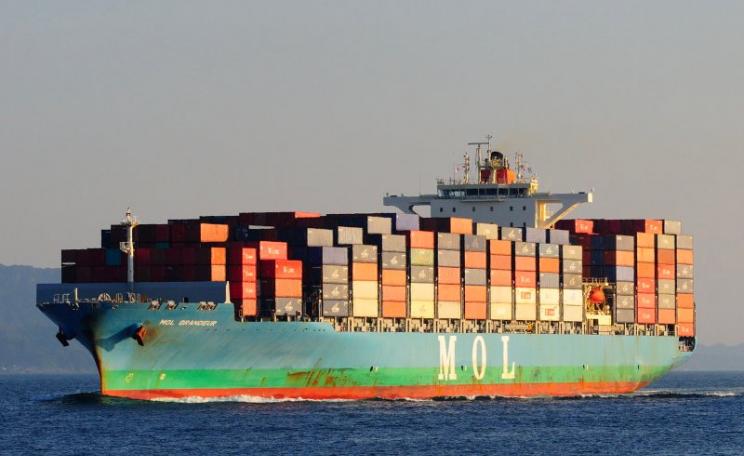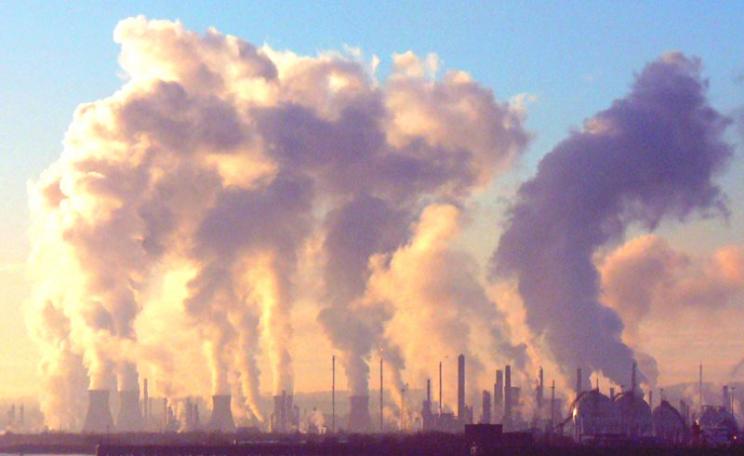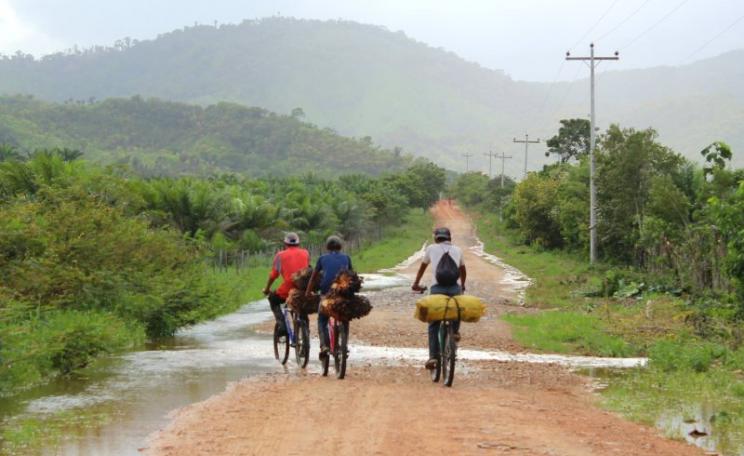There is a possibility, a real danger, that we will hand young people and future generations a climate system that is practically out of their control. We have a global emergency.
When it comes to global warming, what else don't we know?
What science does know, and what it can infer from studying archeological records, already makes anybody who thinks the long-term habitability of Earth is more important than short-term profits very worried.
One detail that may have been under-appreciated is meltwater. Melting ice sheets, especially in Greenland and Antarctica, is well understood to raise the sea level. But the effects might not be simply the additional water added to the oceans.
In this scenario, the melted freshwater will additionally increase warming, thereby creating a feedback loop that will accelerate the loss of polar ice sheets, thus accelerating the rate of sea-level rise. How fast? Fast enough that the sea level could rise by "several meters", possibly six to nine meters, in 50 to 150 years.
This sobering prediction of what might happen without a drastic reduction in greenhouse-gas emissions is the conclusion of 19 climate scientists from the United States, France, Germany and China who studied the effect of growing ice melt from Greenland and Antarctica through the use of climate simulations, paleoclimate data and modern observations.
The paper, published in Atmospheric Chemistry and Physics and led by James Hansen (see his article on The Ecologist), concludes that swift action is necessary in the face of a "global emergency".
Predictions of a future catastrophic rise in the oceans, threatening to drown many of the world's biggest cities, are by now far from novel. Two other recent papers conclude that humanity has already committed itself to a six-meter rise in sea level because of the greenhouse gases already thrown into the atmosphere and the retention and later slow release of much of those gases by the world's oceans.
A study in the journal Science estimates that more than 1,115,000 sq.km (444,000 sq.miles) of land, where more than 375 million people live today, would be inundated by such a rise.
Compare that to the complacency of the world's governments at the Paris Climate Summit in December 2015. Despite a thunder of plaudits from the corporate media, the governments committed themselves to goals that, even if achieved, would lead to a global temperature rise of nearly 3 degrees Celsius by 2100, with further increases beyond that.
That is far beyond the goal of 1.5 degrees set at the summit. But even the summit's actual modest goals are not necessarily attainable because peer pressure is the primary mechanism to induce compliance; there are no binding legal agreements.
There is a possibility, a real danger, that we will hand young people and future generations a climate system that is practically out of their control. We have a global emergency.
Feedback loops accelerate ice-sheet melting
The Atmospheric Chemistry paper says that sea level was at times six to nine meters higher than today approximately 115,000 years ago when the average global temperature "probably was only a few tenths of a degree warmer than today." Ice-sheet stability may be a key to understanding rapid sea-level rise, the authors write.
The injection of added freshwater into the oceans from faster ice-sheet melting reduces the mixing of ocean waters, causing warmer water to remain at lower depths and thus making warmer water more available to melt the remaining ice shelves. This additional impact of meltwater on the global climate and its feedbacks had not been appreciated before, the authors write. They summarize this as follows:
"Our principal finding concerns the effect of meltwater on stratification of the high-latitude ocean and resulting ocean heat sequestration that leads to melting of ice shelves and catastrophic ice sheet collapse. Stratification contrasts with homogenization.
"Winter conditions on parts of the North Atlantic Ocean and around the edges of Antarctica normally produce cold, salty water that is dense enough to sink to the deep ocean, thus stirring and tending to homogenize the water column. Injection of fresh meltwater reduces the density of the upper ocean wind-stirred mixed layer, thus reducing the rate at which cold surface water sinks in winter at high latitudes."
Existing models, including the authors' own, underplays this mixing effect, the paper states, and thus anthropogenic warming "may be even more imminent than in our model." Regardless of the exact timing, a tipping point will be reached:
"If the ocean continues to accumulate heat and increase melting of marine-terminating ice shelves of Antarctica and Greenland, a point will be reached at which it is impossible to avoid large-scale ice sheet disintegration with sea level rise of at least several meters. The economic and social cost of losing functionality of all coastal cities is practically incalculable."
What might happen if the global temperature rises 2 degrees C. from pre-industrial levels? The possibilities are these:
"Continued high fossil fuel emissions this century are predicted to yield:
(1) cooling of the Southern Ocean, especially in the Western Hemisphere;
(2) slowing of the Southern Ocean overturning circulation, warming of the ice shelves, and growing ice sheet mass loss;(3) slowdown and eventual shutdown of the Atlantic overturning circulation with cooling of the North Atlantic region;
(4) increasingly powerful storms; and
(5) non-linearly growing sea level rise, reaching several meters over a timescale of 50-150 years. These predictions, especially the cooling in the Southern Ocean and North Atlantic with markedly reduced warming or even cooling in Europe, differ fundamentally from existing climate change assessments."
A cold and arid Europe
The authors cite evidence that at the end of the interglacial period in which sea level was believed to be six to nine meters higher than today, there was a dramatic cooling in northern Europe, estimated at 3C in summer and 5C to 10C in winter in southern Germany, accompanied by four centuries of arid weather and a decline in trees.
During the period of sea-level rise, the North Atlantic is also believed to have suffered from more severe storms, with archeological evidence from Bermuda and the Bahamas used as evidence.
As a consensus for global warming emerges, there is less certainty that capping global temperature increase to 2C would be 'safe'; thus the Paris Climate Summit's surprise conclusion to set a goal of a 1.5C limit. To achieve such a goal, however, would, as noted above, require cuts to greenhouse-gas emissions far beyond anything pledged.
The studies indicating that humanity has already committed itself to a six- to nine-meter sea-level rise imply that temperatures will rise past 1.5 degrees as greenhouse gas-generated heat trapped by the oceans is slowly released into the atmosphere over many decades, if not centuries.
There is no alternative to a massive change to industrial activity - no amount of re-forestation can come close to canceling out the effect of industrial activity. The Atmospheric Chemistry paper concludes with this sober assessment:
"There is a possibility, a real danger, that we will hand young people and future generations a climate system that is practically out of their control. We conclude that the message our climate science delivers to society, policymakers, and the public alike is this: we have a global emergency. Fossil fuel CO2 emissions should be reduced as rapidly as practical."
Unfortunately, we live in an economic system that requires constant growth and offers no alternative work for those whose jobs would be eliminated were we to shut down the most polluting industries. In one of his novels, Arthur C. Clarke wrote of a 23rd century world that was finally eliminating the clutter and pollution of the 20th century.
Sad to say, the late science fiction master was overly optimistic.
Pete Dolack is an activist, writer, poet and photographer, and writes on Systemic Disorder. His forthcoming book 'It's Not Over: Lessons from the Socialist Experiment', a study of attempts to create societies on a basis other than capitalism, will be published by Zero Books in February 2016.
This article was originally published on Systemic Disorder.







